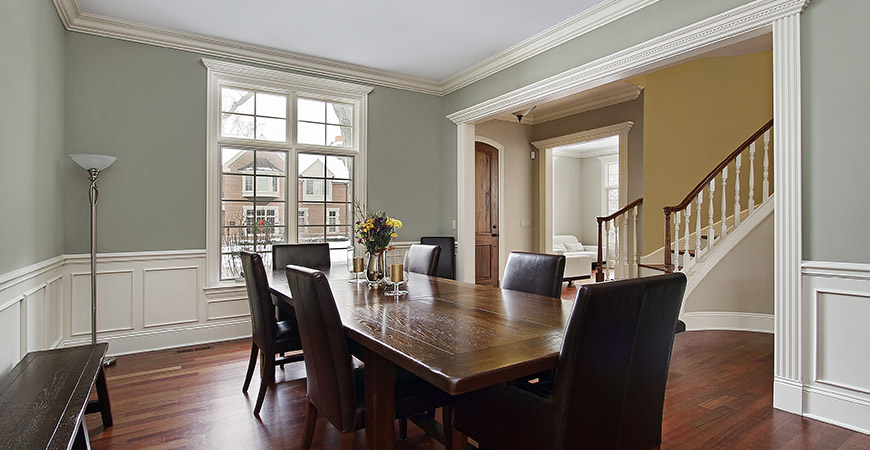
Crown molding is a trim that has long since achieved a status of timeless elegance. Indeed, adding a simple border of crown molding around the ceiling of a room instantly creates a sense of sophistication. But, because the sheer number and variety of crown moldings have expanded over time, many homeowners get overwhelmed by the breadth of choices available to them. By extension, many homeowners end up choosing a cut of crown molding that is not appropriate to their particular space. To follow are some of the most common mistakes that homeowners make when purchasing crown moldings. Keep these in mind when shopping, and you are sure to have crown molding success.
Selecting the Wrong Size
If it is your first time shopping for crown molding, it can prove difficult to select a cut of the correct size. Many cuts of crown molding look perfectly proportional in the store; however, once you get them in your space you recognize that they just do not fit. Choosing a molding that is not appropriately sized is not the end of the world, but it certainly contributes stress and an unnecessary return to the store.
The following is a general rule of thumb to abide by when sizing your crown molding to your room. Keep in mind that your moldings need to be proportional to your ceiling height, as they occupy vertical space on the wall. If your room has a ceiling height of eight feet, you will want to purchase crown moldings with a width that measures somewhere between three and five and a half inches. In a slightly taller space, with ceiling measuring between nine and ten feet, purchase moldings that measure between five and a half and seven inches in width. In a room with a ceiling higher than ten feet, you will need to build up moldings by combining multiple cuts next to one another. This is a general blueprint of dimensions to work with, but feel free to tweak the measurements of your finishes as you see fit, keeping in mind the importance of proportional moldings.
Large-Scale Experiments
Experimenting with crown moldings is not a mistake; however, experimenting on a large-scale without appropriate planning can prove disastrous. Let us consider a related scenario. You are a homeowner hoping to remodel your living room. This living space has an eclectic design profile and is even equipped with twelve-foot ceilings. As such, you are hoping to integrate build up molding around the ceilings of your space. When you frequent the hardware store, you find two striking cuts of molding on two separate visits. You purchase both and combine them together on your wall, flush with the ceiling as well as with one another. You soon discover that the combination of styles is incredibly busy, even within your eclectic space. New moldings will need to be purchased and reinstalled.
The aforementioned scenario is what would be termed a large-scale experiment. An alternative route to take would be to frequent a small-scale retailer. These retailers often afford customers the opportunity to take shortcuts of moldings home to hold next to one another and against their walls. You might also use any number of online programs that allow you to play with designs in a digital format. All in all, it is essential that you both plan your design and take precautions before proceeding to install crown moldings in your space.
DIY Installation
One of the most costly mistakes that homeowners make is that of installing crown moldings on their own. Unless you are a seasoned professional, it would be best for you to hire a general contractor to help with this venture.
You are likely pondering the question: “What can a contractor do with my moldings that I cannot do myself?” First and foremost, a general contractor has a thorough appreciation for, and understanding of, what is involved in crown molding installation. He or she is adept at finding studs, leveling moldings and attaching these finishes securely. Also, a contractor will take care of the most complicated aspect of crown molding installation: making precise miter cuts. If you do not cut the corners of your moldings at just the right angle, they will not fit together cohesively. By extension, you will need to purchase a whole new set. Most general contractors will install moldings for a very affordable price. Do your research and hire someone you can trust.
All in all, adding crown moldings to your home is an excellent way of creating a sense of value and elegance. With that being said, be sure to select crown moldings of an appropriate size and shape. Additionally, it is best for you to shy away from large-scale experiments with moldings. These experiments rarely achieve the sense of genius you are after. Last but not least, hire a contractor to help you with this venture. You will be forever grateful that you did.
